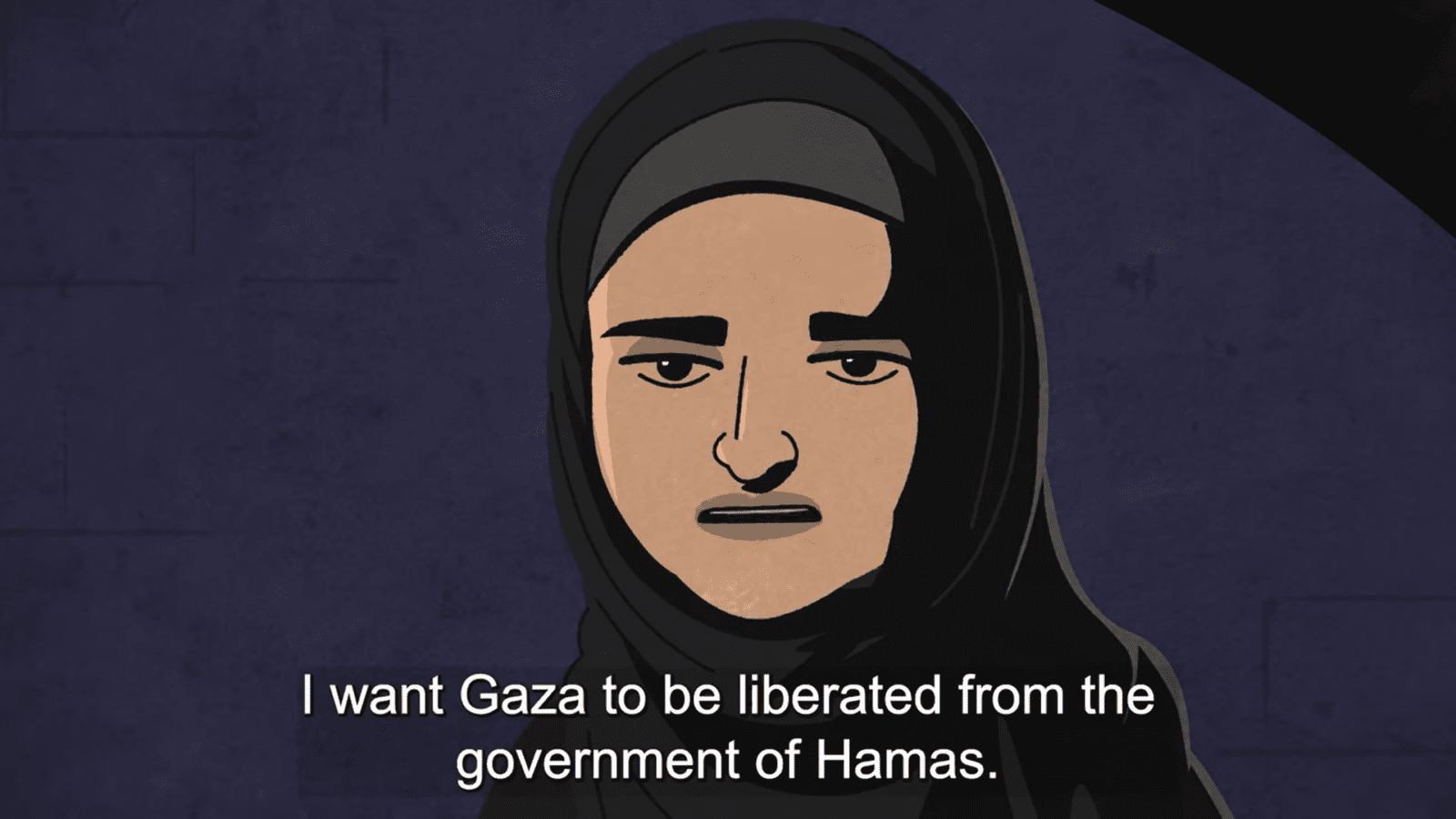Interviews produced in the form of animations give voice to residents of the region about what they live every day under the control of the terrorist group
A series of interviews with residents of the Gaza Strip, called “Whispered in Gaza,” seeks to give voice to ordinary people who would like to tell the world what life is like under the rule of Hamas, a group considered terrorist by the most important nations in the world, including the United States, the European Union, the United Kingdom, Israel, among others. Short and in animation format, the films, each about two minutes long, were produced by the Center for Peace Communications (CPC), a non-profit organization in New York, and are also being published by The Times of Israel.
In the clips we find authentic stories of ordinary people with expectations, aspirations, and dreams – from running a pharmacy, working as a journalist, or simply dancing – that are forbidden by Hamas. The videos also show common problems of everyday local life that are drastically exacerbated and made worse by the terrorist group’s control. All names have been changed, and the CPC has made use of the animation format and a voice-altering technology to protect the identity of the sources.
According to CPC President Joseph Braude, the courageous participants consented to be interviewed to convey their ideas and experiences to an international audience because “they want these stories to be heard.”
In the animations, residents relate the impacts and influences of Hamas on their daily lives, denouncing corruption, threats, extortion of civilians, censorship and violence against critics of the group, repression of women’s rights and of artistic manifestations considered “anti-Islamic,” silencing of journalists, and other Hamas actions that directly impact the quality of life and future prospects of Gaza residents.
In addition to the videos, The Times of Israel report presents data and research that corroborate the stories told. One example is the testimony of a woman named Mariam, a professional dabke dancer. After Hamas took control of Gaza in 2007, they told her to stop dancing and study the Quran. When she refused, they began to threaten her family. Unfortunately, Mariam is not alone. Women’s rights are ignored by Hamas, as the report shows: in 2021, Hamas ruled that women would now need the permission of a male guardian to travel. In 2018, Hamas blocked the launch of a television channel for women and banned the opening of a ballet school for girls, among other decisions that affected not only this entire section of the population, but also the personal lives of these women. Tired of Hamas’ constant interference, Mariam says in the interview that “Gaza needs to be liberated, not from the occupation, but from those among us. We have already been liberated from the occupation, I want to be liberated from the Hamas government. Then Gaza would develop. We would welcome tourists and have theaters. I could even dance again.
Another striking testimony in the series is that of Layla, who says that although there are people in Gaza who are war-weary, just like her, they cannot say so because they would be accused of being spies and traitors. She also denounces that the media portrayal of the region exacerbates the isolation she and many others feel, since “judging by what you see in the media, Hamas is considered the ‘resistance,’ bombing targets, impacting the scene, leading the Palestinian cause. But many media outlets are working for Hamas. Al-Jazeera, Al-Mayadeen, their flagship channel Al-Aqsa and many others portray Hamas as heroes. (…) Hamas goes to war as if Gaza is a nuclear state. They tell the media that they are capable of all this destruction, when in reality they can’t even feed their population.”
Another story is that of a woman with a degree in psychological assistance who started to provide counseling in her own home. The Hamas-controlled police demanded that she stop her practice so that they could find out what was going on and “contain” the issues presented in the conversations, i.e. prevent the population from speaking out against what the Hamas authorities were doing. When she refused to close her practice, the police later returned, surrounding her house, and started shooting to intimidate her and her family and other people. In the attack, her nephew, who was only one year old, was killed. To “keep her sanity,” she closed her business.
According to the political scientist and executive president of StandWithUs Brazil, André Lajst, this initiative is very important as a way to register the dissatisfactions of the population of Gaza with the Hamas regime, because “these sad reports only add arguments to the fact that, with Hamas dominating Gaza and fostering a pro-conflict culture and ideology, we will not be able to achieve peace in the region anytime soon.
The “Whispered in Gaza” series, which has over 20 episodes, is available on the Center of Peace Communications’ YouTube channel and on The Times of Israel’s website.
*** Translated by the DEFCONPress FYI Team ***
